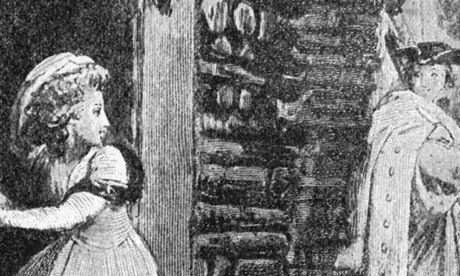After Pilgrim's Progress and Robinson Crusoe, the next landmark in English fiction is a towering monument of approximately 970,000 words, Clarissa, the longest novel in the English canon. From time to time, its length is challenged by later upstarts – most recently by Vikram Seth's A Suitable Boy and Infinite Jest by David Foster Wallace – but Samuel Richardson's "History of a Young Lady" remains an extraordinary achievement.
To Samuel Johnson, it was simply "the first book in the world for the knowledge it displays of the human heart". Most critics agree that it is one of the greatest European novels whose influence casts a long shadow. I first read Clarissa, in France, in a gold-tooled library edition of many volumes. In the house where I was staying there was nothing else to read in English; I picked it up quite ignorant of its reputation and importance. Perhaps that's the best way to approach a classic – unawares. Soon, I was swept up in the headlong drama of Clarissa Harlowe's fate – a novel with the simplicity of myth.
Clarissa is a tragic heroine, pressured by her unscrupulous nouveau-riche family to marry a wealthy man she detests. When she is tricked into fleeing from her family's designs with the dashing and witty Robert Lovelace, she inadvertently places herself in the power of an inveterate rake, perhaps the most charming villain in English literature. It's the magic of Clarissa that the lovers seduce the readers' imagination as much as any in our literature, including Romeo and Juliet. From this we have Dr Johnson's famous verdict, noted by Boswell: "Why, sir, if you were to read Richardson for the story… you would hang yourself… you must read him for the sentiment."
The genius of Richardson's narration is not simply the innovative use of epistolary fiction – the novel is told through a complex web of letters – but also the subtlety with which he unfolds the dark tragedy of Clarissa's fatal attraction to Lovelace. All too human in her capacity for self-deception in matters of sex, she finds his charm impossible to resist. It's the unique spell of the book that her fiercely protested virtue is tinged with intimations of unacknowledged desire.
Clarissa Harlowe also sets the gold standard for English fictional heroines. She is beautiful, intelligent, high-principled, resolute and proud, with deep humanity. A Marxist critic would also point out that she is profoundly middle class. Her tragedy is to become the victim of a man who will imprison, drug and ultimately rape her. Lovelace is equally divided. His letters – "I love to write to the moment", he says – are brilliant. But his behaviour is villainous. Modern readers will find his treatment of Clarissa unbearably cruel. Still, softened and humanised, it's not too much of a stretch to see his inspiration standing behind a character like Mr Darcy in Pride and Prejudice.
The first parts of Richardson's masterpiece appeared in 1747-48 and rapidly became cult reading among the new class of English readers. By a neat conjunction, this "history of a young lady" was joined the following year by "the history of... a foundling", the novel (by Richardson's rival, Henry Fielding) better known as Tom Jones. In the space of just one year, English fiction had come of age. For a century and more, English writers would essentially explore imaginative terrain mapped out by Richardson and Fielding, the co-founders of the modern novel.
Note on the text:
Richardson was well known in mid-18th-century London as a leading master printer with a good business in Salisbury Square, just off Fleet Street. He began circulating his new manuscript among friends as early as 1744-45, and published the first edition in two volumes on 1 December 1747, printed on the presses of his own shop. The title page, according to current conventions, announced that Clarissa was "published by the editor of Pamela", and made no reference to Richardson. As an inveterate reviser, but "a poor pruner", he continued to tinker with the text. A second edition appeared in 1749, then a fully revised version in 1751, and finally a fourth edition in 1759, which is usually the basis for modern editions.
Three other books by Richardson:
Pamela (1741); Sir Charles Grandison (1753-4); Selected Letters (6 vols., 1804)











